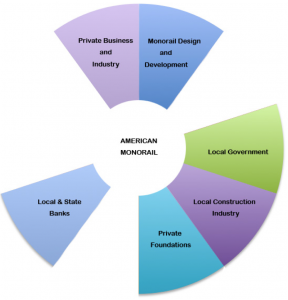 Local Government Shaping of Transportation Service and Development
Local Government Shaping of Transportation Service and Development
City, county, and municipal governments, and their respective planning, infrastructure and transportation agencies represent local constituent and community interests most directly. However, the legal, fiscal and long term funding constraints under which local jurisdictions operate preclude local governments from initiating transportation projects or deviating from adopted regional transportation plans, while community-level interests and participation in planning and evaluation of proposed transportation developments are often thwarted by regional transportation authorities’ adherence to top-down planning and funding regimes of federal transportation agencies.
Local community influence and aspirations are often subordinated to the broader objectives and processes of regional authorities in control of the transportation planning, evaluation and funding processes. The magnitude and cost of mass transportation system planning, development and financing tend to confine decision-making regarding system development to regional transportation authorities’ boards of directors, and have all but removed transportation planning and development from local governments’ urban planning processes. Once the greatest single determinant of the size, shape and economic viability of a town, city or urban area, transportation facilities are seldom planned or designed as integral elements of urban environments or networks of commerce, while local governments, their planning agencies and business communities have been relegated to spectator status in the vital decision making processes of mass transportation planning.
While regional transportation authorities tend to ignore the potential of monorails, and consistently follow the traditional right of way acquisition and condemnation processes required of all other forms of transportation development, city and county governments holding fee title or other controlling jurisdiction over land, property and rights of way suitable for monorail system development can proactively enter into joint development agreements to build transportation facilities and systems by making these valuable resources available for development as monorail guide way corridors. Savings realized by acquisition of rights of way at essentially no cost, could cut as much as half the expense, and half the implementation time required for completion of traditional mass transportation projects.
By forming strategic coalitions with private business groups, industrial associations, monorail manufacturers and developers, public interest banks, local construction industry and private foundations, local governments can reach beyond legal, jurisdictional and bureaucratic limitations on participation in mass transportation planning processes, as well as, enter into joint ventures with nongovernmental and private sector entities. Local governments’ assumption of leadership in bringing private resources and entities into focus on transportation system implementation projects would greatly enhance the effectiveness and value of transportation development and services to the local environments and communities they serve.




